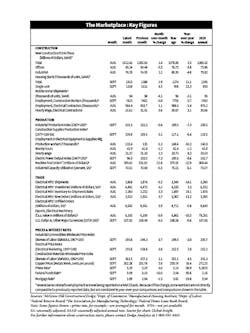Electrical Marketing’s Leading Economic Indicators - October 23, 2020 Update
Privately-owned housing units authorized by building permits in September were at a seasonally adjusted annual rate of 1,553,000, +5.2% above the revised August rate of 1,476,000 and +8.1% above the September 2019 rate of 1,437,000. According to the latest housing data from the U.S. Census Bureau, single-family authorizations in September were at a rate of 1,119,000, +7.8% above the revised August figure of 1,038,000.
AIA report sees marked increase in billings at architecture firms in September
A slight improvement in business conditions has led to fewer architecture firms reporting declining billings, according to a the latest Architecture Billings Index (ABI) from the American Institute of Architects (AIA), Washington, DC. AIA’s ABI score for September was 47 points compared to 40 points in August (any score below 50 points indicates a decline in firm billings).
“Despite the multi-family residential sector showing signs of improvement, overall business conditions are recovering at a disappointingly slow pace,” said AIA Chief Economist Kermit Baker. “Other sectors may begin to stabilize in the coming months, but across the board, improvement shouldn’t be expected until the economic impact of the pandemic subsides significantly.”
Leading Economic Indicators increase in September
The Conference Board’s Leading Economic Index (LEI) for the U.S. increased +0.7% in September to 107.2 (2016 = 100), following a +1.4% increase in August and a +2% increase in July. “The U.S. LEI increased in September, driven primarily by declining unemployment claims and rising housing permits. However, the decelerating pace of improvement suggests the U.S. economy could be losing momentum heading into the final quarter of 2020,” said Ataman Ozyildirim, senior director of economic research for The Conference Board. “The U.S. economy is projected to expand in Q4, but at a substantially slower rate of +1.5% (annual rate) according to The Conference Board’s GDP forecast. Furthermore, downside risks to the recovery may be increasing amid rising new cases of COVID-19 and continued labor market weakness.”

